Emergencies happen, and knowing how to perform dog CPR can dramatically increase your pup’s chances of survival. Despite this, most dog parents don’t take the time to learn basic pet first aid or CPR techniques.
In this post, we interview an expert in the field of pet safety and emergency preparedness. You will also find a step-by-step guide to dog CPR, complete with detailed photos.
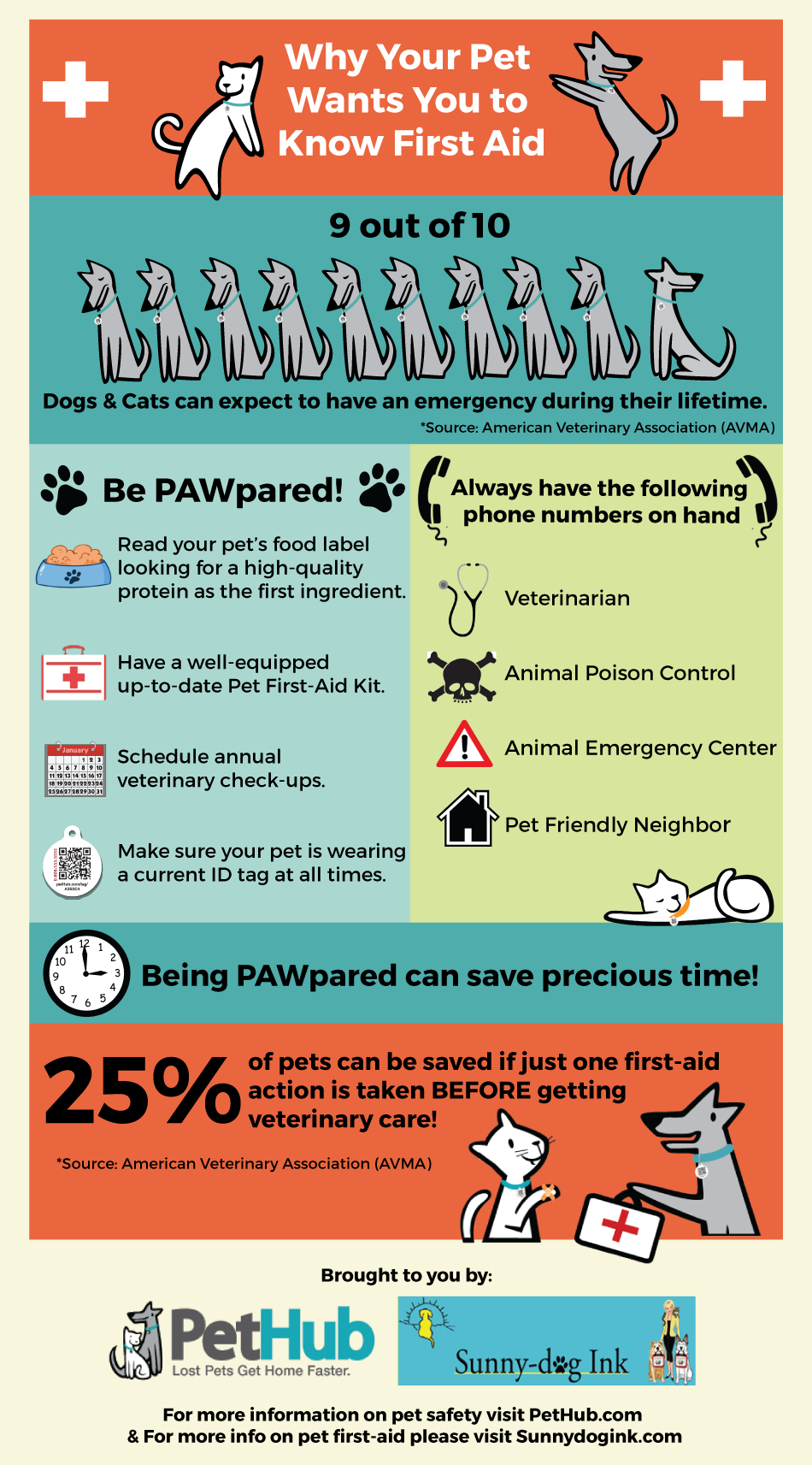
Dog CPR & First-Aid 101
Denise Fleck, the owner of Sunny-dog Ink, has been teaching pet first aid classes for over 15 years and is the creator of Pet First-Aid & CPCR Kits and Classes. We asked her to give our readers information that just might save their dogs’ lives someday.
How common are pet emergencies?
DF: Preventable accidents are the leading cause of death among our pets, and according to the American Veterinary Association (AVMA) 9 out of 10 dogs and cats can expect to have an emergency during their lifetime. Would you know how to help? The good news is that 25% more animals can be saved if humans perform first aid BEFORE getting to their Vet (American Animal Hospital Association AAHA statistic). What this means is that the most competent Veterinarian cannot bring your pet back to life, but by knowing Pet First-Aid & CPR, you can keep your dog or cat alive until you reach professional medical help.
By knowing Dog CPR & First Aid, you can:
- Lower your pup’s body temperature if he suffers from Heat Stroke and prevent brain damage or death
- Stop bleeding and prevent infection by properly bandaging a wound (Knowing where the critical arterial pressure points are on your pooch can truly be life-saving!)
- Prevent your dog from losing consciousness by alleviating choking
- Expel poison from your pet’s system by properly inducing vomiting
- Pump your pup’s heart until you can get professional medical help
Pet First-Aid is by no means a replacement for veterinary care, but reacting at the moment injury occurs and then getting to professional medical help can make all the difference. You and your veterinarian must work together as a team for the well-being of your dog.
[HLM_Insurance_Widget placement_name=‘DogCPRArticle’ placement_id=‘2’ campaign=‘DogCPRArticle’]
Many people think that because they have taken a human CPR course, they can perform it on their dog. Is this true?
DF: Even if you have taken a human First-Aid & CPR course, realize that humans, canines & felines do not share anatomies, and although the concept is the same, the technique differs as does our ability to communicate with each other. We can’t ask our cat, “Where does it hurt?” or our dog, “What did you eat?”
Also, in human first aid, you are not taught what to do should your patient bite you! In a Pet First-Aid Class, animal body language should be discussed as well as practice in muzzling, restraining, lifting and carrying a four-legged furry patient. I spend a lot of time teaching various bandaging techniques in my classes as dog ears and tails lend themselves to interesting solutions. The fact though that pack animals often try to hide injuries requires us to use detective skills, so pet-specific training is essential to being a responsible and caring pet mom, pet dad or animal care worker. I think one student summed it up best when she said, “The last thing you want is to wish you HAD taken Denise Fleck’s Pet First-Aid & CPR Class.”
What are dog CPR and CPCR?
DF: Cardio Pulmonary Resuscitation (CPR) is the most commonly known method of artificial life support and will probably always be the “brand name” for the technique we use to help our pets. However, research has led to the advancement of a faster more efficient method referred to as Cardio Pulmonary Cerebral Resuscitation (CPCR). Both techniques utilize a combination of chest compressions and artificial respirations, however, CPCR focuses more on continuous chest compressions to keep that life-giving blood and oxygen flowing to the brain as well as the rest of the body.
By keeping the momentum going (30 compressions between breaths as opposed to 15 used in the past), and in the case of larger dogs and the availability of a 2nd person, a spleen or abdominal push can prove helpful.
*Realize that you have not given the dog an antidote for poisoning, stopped internal bleeding, or cured a disease by doing CPR. Still, by being the pump that the pet’s body cannot be at that time, you keep the needed blood and O2 flowing until you reach a medical professional who can provide the antidote, perform the surgery, or paws crossed…can cure the disease.
Since CPCR for dogs seems to be the new method, can you explain how to do it?
DF: CPCR is best learned in a classroom situation where you have the benefit of demonstration and hands-on practice on life-like canine mannequins. You wouldn’t want to perform this on a pet in need without having practiced under the watchful eye of a competent instructor first. Striving for a speed of 100+ compressions per minute, you perform at a ratio of 30 chest compressions to 2 breaths, re-checking pulse every 4 rounds.
Step-By-Step Dog CPCR
1. Place the dog on a flat surface on his side and slightly extend his head by pulling back on the chin to stretch out his throat/tracheal area. Not only does this straighten out the airway, but it also minimizes your chance of blowing air into his stomach rather than lungs.
2. Bend the dog’s front leg gently at the elbow and bring it towards the chest. This is a gentle movement bending the elbow at the joint. Where the elbow touches the chest is the proper spot to place your hands for compressions.
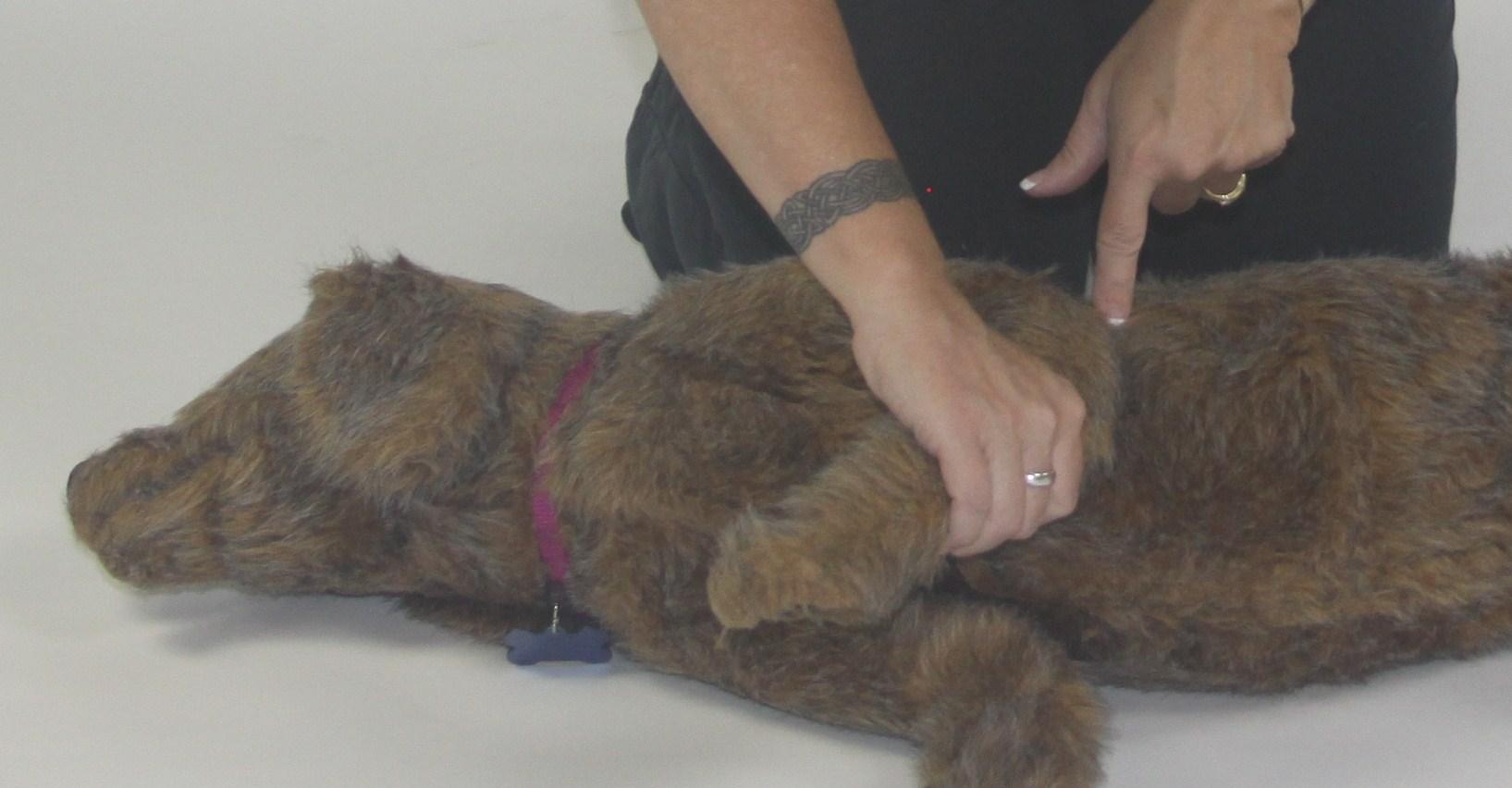
3. Compress approximately 1/3 the width of the chest diameter. You should feel ribs, then press a lung before you compress the heart to effectively create circulation.
*When giving breaths, use 1-2 hands to seal off the mouth and breathe directly into the dog’s nostrils. For neonates, use a small puff breath only, and NEVER perform CPCR or rescue breathing on a conscious animal!
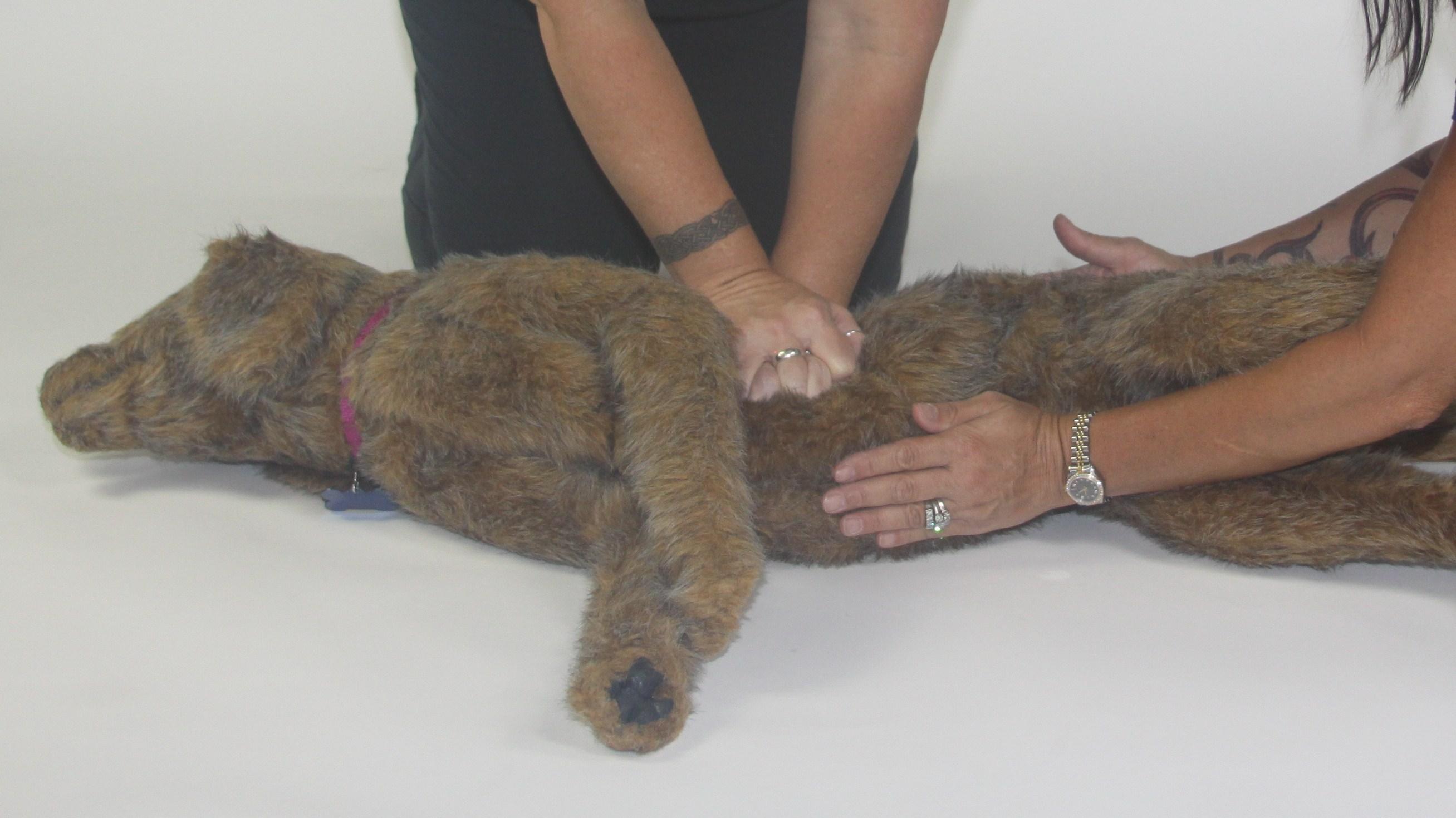
4. Rapid initiation of CPCR is critical and must start within four minutes of the heart stopping to avoid brain damage. Quickly transport the pet to the nearest animal emergency center or veterinary hospital.
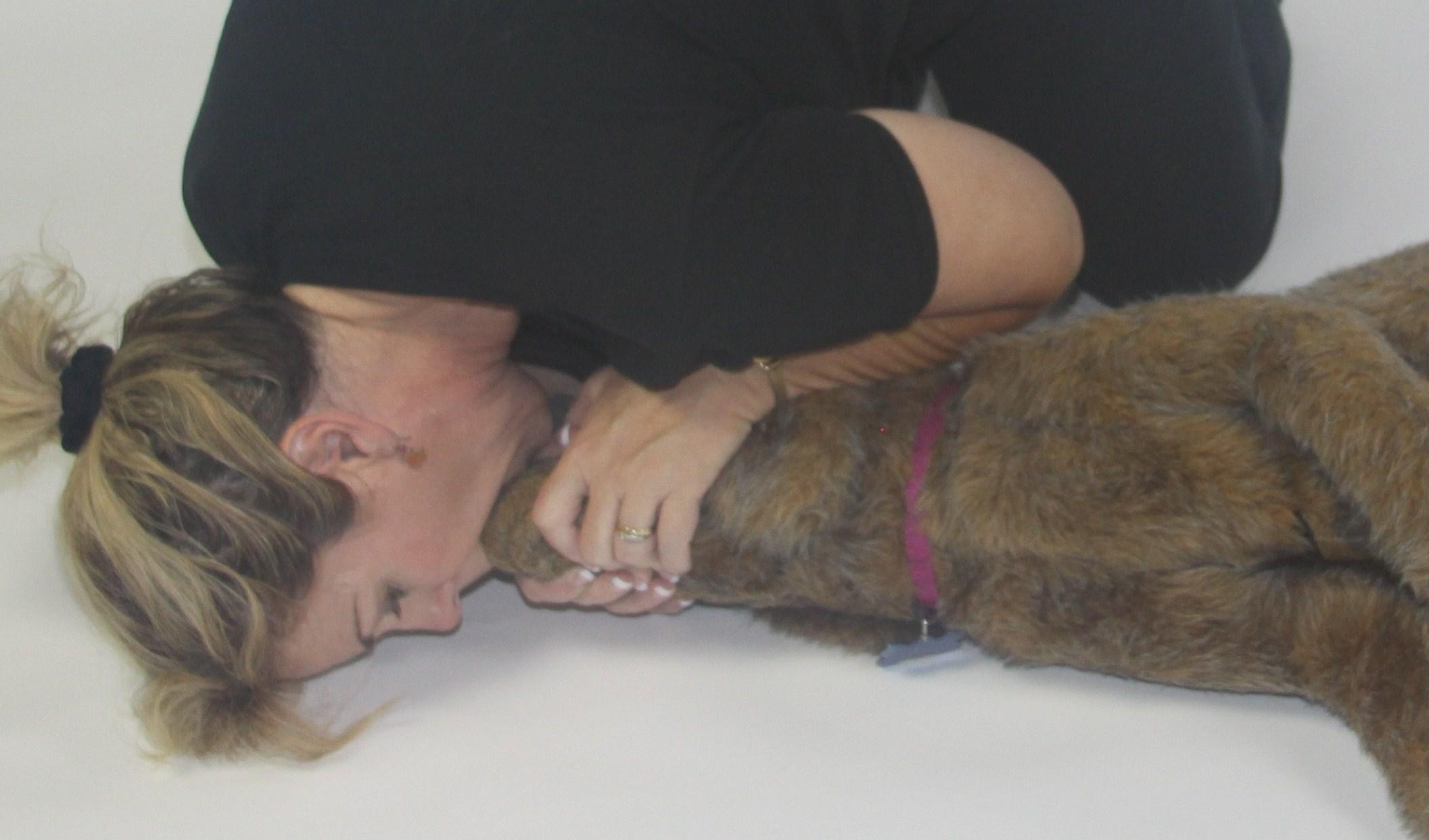
Realize that you may not get the dog to breathe or resume a heartbeat independently and may need to continue CPCR while someone else drives. Do not stop administering CPCR until the dog shows signs of recovery or until a veterinary professional can take over the administration of CPCR.
Fleck also explains that there are special considerations for the size of the dog as well as age (neonates, for example) and a two-person technique for larger dogs. You can learn more about these specifics in her class and resources.
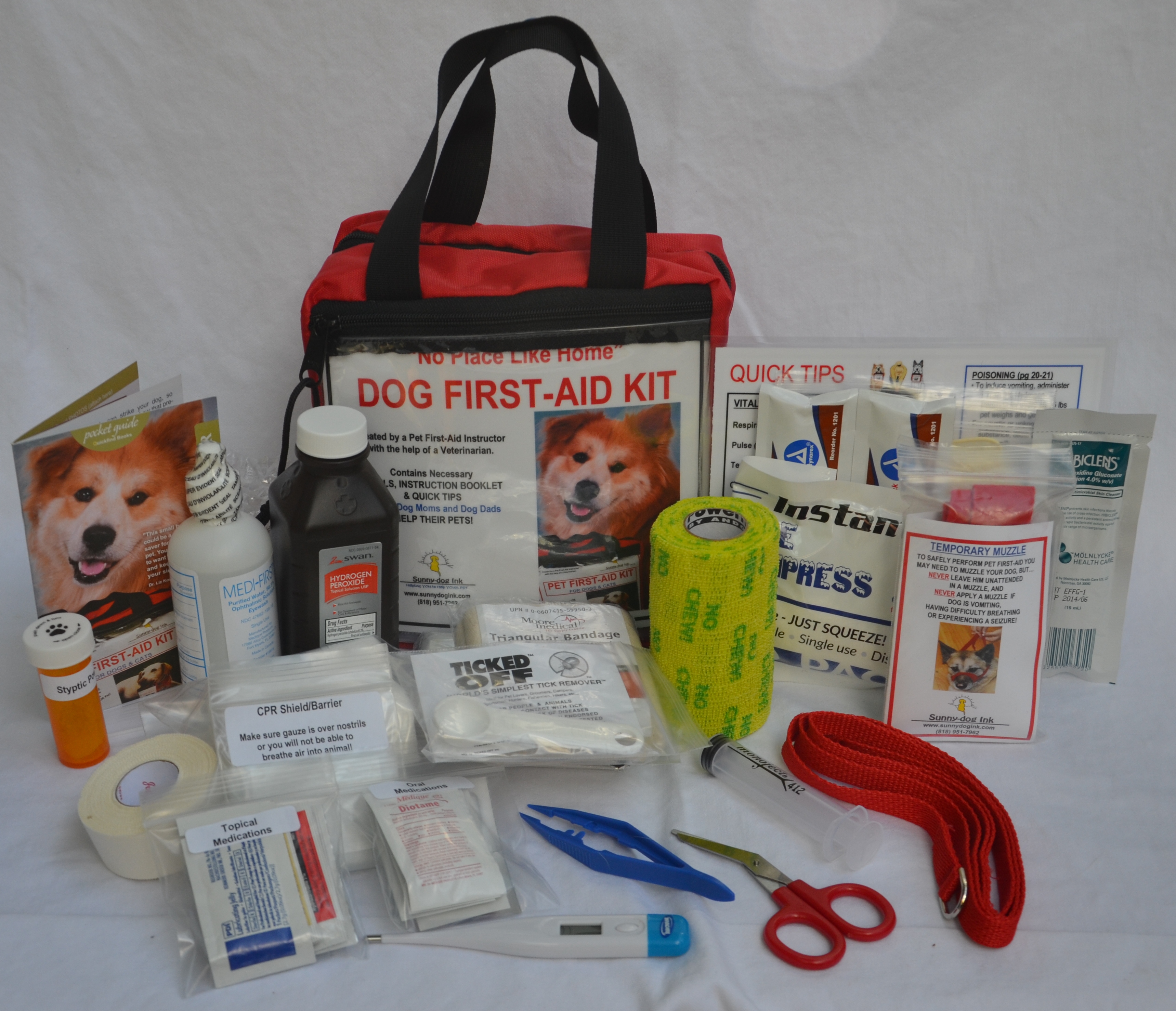
Resources
Are you looking for Fleck’s books and classes? Her posters, which offer step-by-step instructions on how to perform the doggie Heimlich-like maneuver and CPCR, can be found here. She also has Dog & Cat First Aid & CPR pocket guides available here.
Of course, if you can, taking one of her classes is the best way to learn these life-saving techniques. View her schedule here.
 Toledo, United States.
Toledo, United States.